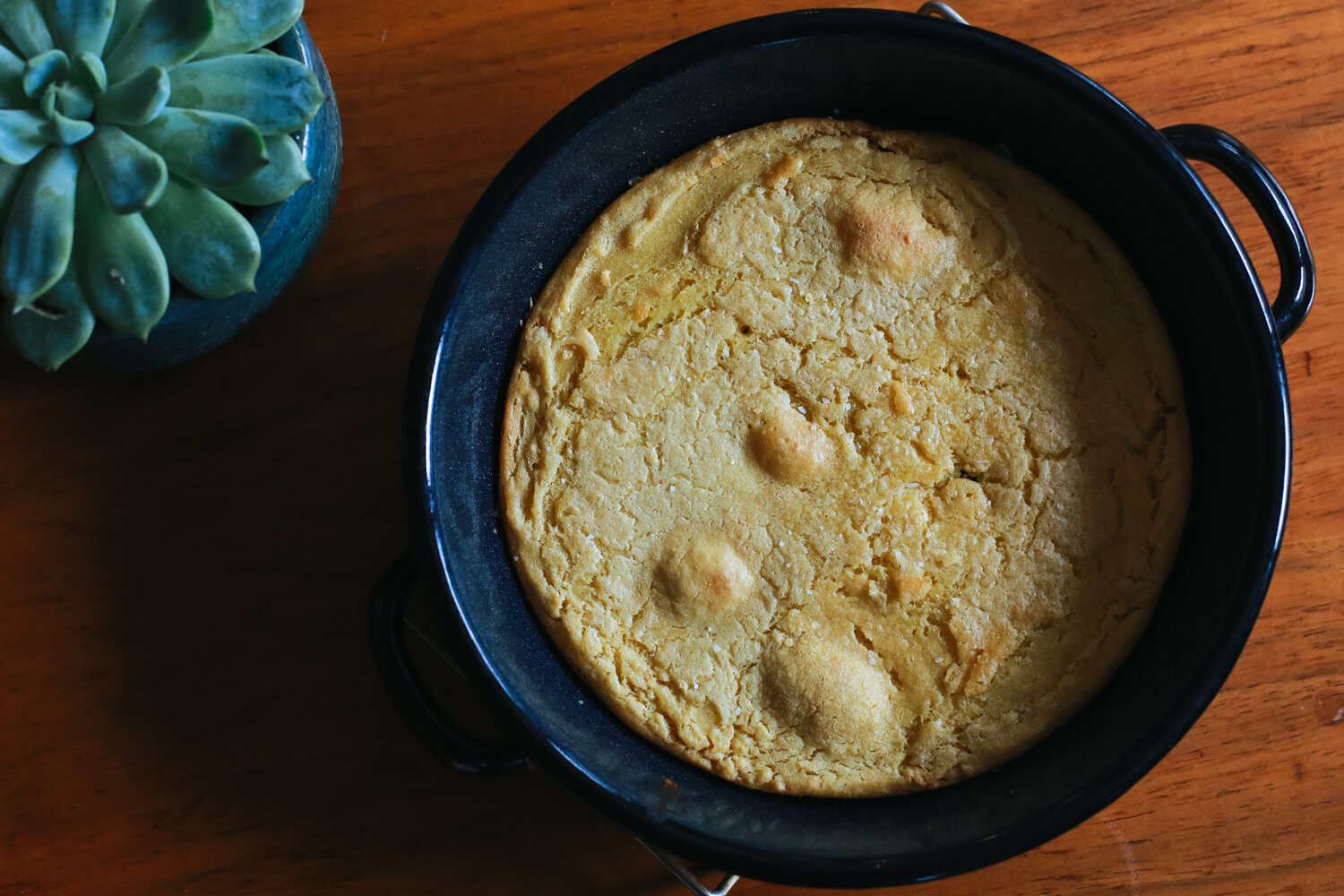How to Make Chicken Stock
If I've roasted a chicken or bought a good quality rotisserie chicken, I'll sometimes save the bones in the freezer (like a creepy bone collector). When I have a big bagful of bones, I'll make chicken stock.
What is chicken stock?
Chicken stock is used as a base for soups and stews (along with many other things). It involves simmering bones in water for a very long time, extracting more of the flavor and gelatin. It's meant to be a blank slate, so that you can use it in many different applications. That's why you won't see too much seasoning in this stock. When you're ready to use it in a recipe, that's when the rest of the seasonings come in. Or on the flip side, if your stock becomes very concentrated (which is great!), you can add a little extra water when you use it.
What's the difference between broth, stock and bone broth?
Broth is water that's been simmered with other things, including vegetables, legumes or meats. Hot ham water, is an example of a broth. So chicken stock and bone broth are both types of broths, but not the other way around.
Stock, as I mentioned earlier, gets a little more love in the form of time in the stockpot (at least 3 hours). You can make stock from pretty much any bones, but it is important that there are bones involved. It's typically seasoned in a classic way so that it can be used in multiple recipes.
Bone broth is like an amped-up stock. It usually involves blanching and roasting bones first to get a richer flavor, and then simmering them for up to 12 hours. The color of bone broth is typically a deep caramel. It's usually made with beef bones or a mix. It's not often made with only chicken bones or it would remain lighter in flavor like a normal stock.
How to Make Paleo Chicken Stock
paleo, gluten-free, whole30-approved recipe | takes 8 hours, makes about 2 quarts
Equipment
- very big stock pot (or slow cooker, if you are cutting the recipe in half)
- mesh strainer or cheesecloth
- cooling containers
- storage containers
Ingredients
- chicken bones from 2 whole chickens, cut into pieces that will fit into your giant stockpot
- 4 onions, quartered
- 12 whole garlic cloves
- 5 stalks celery, roughly chopped
- 2 T whole black peppercorns
- 5 bay leaves
- water
Instructions
- Add the chicken bones to your largest stockpot and add enough water to fully submerge them. Simmer for 4 hours (uncovered or with the lid ajar). Add more water as needed to make sure everything is always submerged. Periodically skim off any foam that's hanging out on the top.
- Throw in the onions, garlic, celery, peppercorns, bay leaves and whatever else you want (seriously, this is like Stone Soup if you want it to be — carrots, fennel, parsley stems, fresh thyme, etc.). Make sure everything is covered with water and simmer (uncovered or with the lid ajar) for another 4 hours. Again, keep adding more water as needed to make sure everything is always submerged.
- When you decide it is ready, strain out the solids. I use a metal mesh strainer, but you could also use cheesecloth if you want your stock very clear.
- Cool the stock quickly using ice cubes and/or pouring it into smaller, heatproof containers.
- Stock will keep in the fridge for up to a week, and you can also freeze it until you are ready to use it.
How to Store Chicken Stock in the Freezer
Freeze stock in portions.
If you use it for soups, you might want to portion out how much you'll need for a typical batch of soup. If you use it for deglazing pans a lot, you can freeze stock in ice cube trays and then transfer them into a freezer bag. This way, you can just grab a couple cubes at a time. I do most of the time even if I wind up using it for soup, just because it's easier to store a freezer bag vs. a big plastic container.











